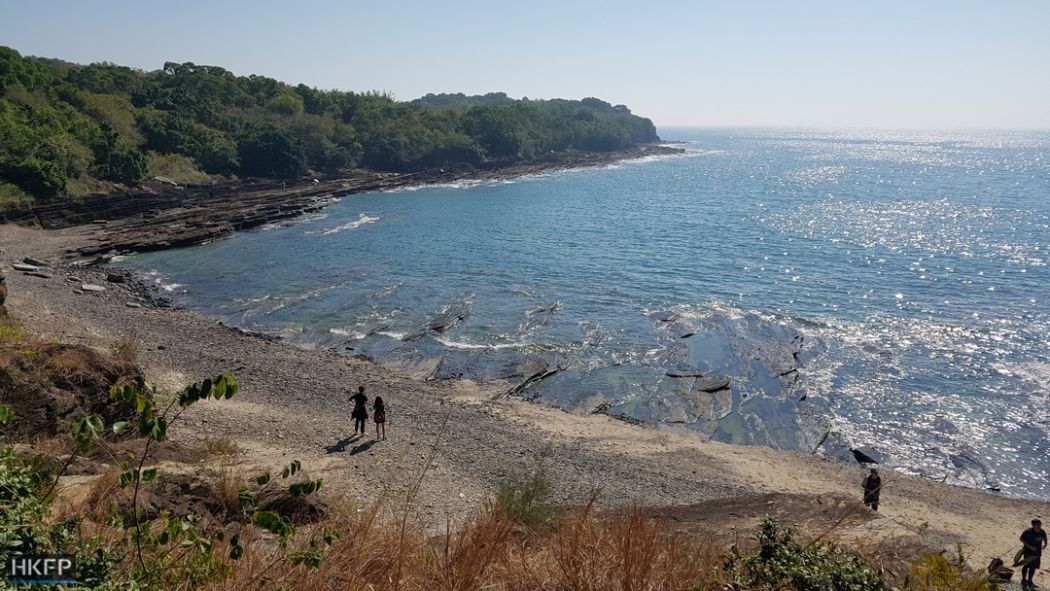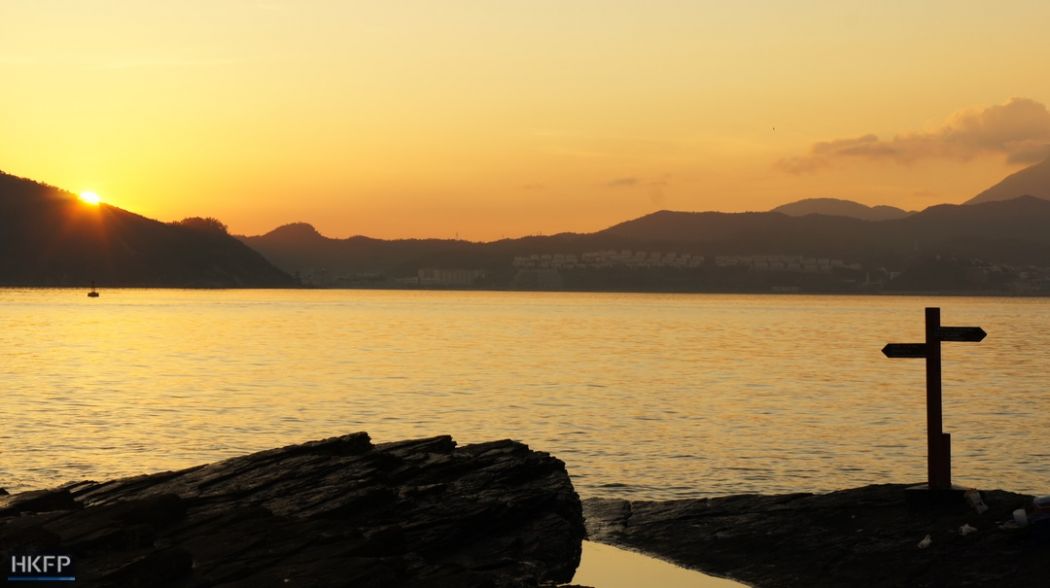HKFP pays a visit to Hong Kong’s wildest and farthest flung outpost – Tung Ping Chau.

Not to be confused with Peng Chau, near Lantau, this small protected island in Mirs Bay is a stones-throw from Shenzhen and nearly two hours from the nearest pier in the New Territories.

The beaches are amongst Hong Kong’s best and cleanest. The bay nearest the pier is best for a dip – the water is crystal clear and bathtub warm in the summer.

The kidney-bean shaped island has an area of just 1.16km and is made up of sedimentary rock, unlike the rest of Hong Kong, which was formed from volcanic igneous rock. It is only 4km from mainland China and is the territory’s most easterly point.

Most of the island is country parkland with overgrown footpaths weaving between old hamlets and unique geological features. Inclined stilt-stones and chert have been dated from the early Paleogene period – there are some spectacular cliffs and wave-cut platforms found nowhere else in the territory.

It is so remote, by local standards, that it is rarely shown on maps and hardly anyone lives there permanently.

It is famous, however, for its colourful sunrises…

‘Ping Chau’ means ‘flat island’ in Chinese. It has the same name, in Chinese, as Peng Chau – near Lantau, so is often referred to as ‘Peng Chau East’ by locals.
Screwpine fruit can be found near the beaches. It can be eaten raw or cooked and is a major source of food in Micronesia and popular in Sri Lanka…

It has a checkered history. Guns and opium were once rumoured to have been smuggled from here and – during the 1950s and 60s -refugees from China often tried to flee the Cultural Revolution through shark-infested waters. Even quite recently, some refugees from Pakistan turned up at the pier, hoping to seek asylum in Hong Kong.
Due to its location, the island has always had a constant police presence. It was once home to over 3000 people – thriving with fishing and agriculture.

By the 1950s, there were around 1,500 people living in the ten villages on the island but, by the early 1970s, only a few elderly people remained.

Now, fewer than a dozen people remain on the island throughout the week, as there is no regular ferry service, water or electricity supply.

Descendants of those who once lived on the island often return during Chinese New Year. Some visit at weekends to relax or cater to tourists.
The island has even attracted a local artist who camps and works from one of the few remaining habitable village houses…

The island is Hong Kong’s best diving site though its coral is under threat and much of it has already died or been damaged.
The situation has worsened since tour companies began offering geo-park tours where visitors hike to the nearest geological features, eat at the restaurants and depart after two hours, often leaving piles of litter in their wake.

The island has a temple dedicated Tin Hau in the village of Sha Tau, and a Tam Kung Temple. Many early residents of Ping Chau were from Shantou (Swatow) and they kept the tradition of worshipping Tam Kung after they settled on the island. There is a still a festival dedicated to these Gods held every decade…

The temples are over 100 years old – one includes a ceremonial bell from the Qing dynasty.
The island is also home to some unique wildlife. Crabs and sea urchins can be spotted, as well as colourful fish if you explore some of the sea caves.

The area has several layers of protection – it is a Country Park, a Site of Special Scientific Interest, a Marine Park and a UNESCO Hong Kong National Geopark.

In addition to tourists, the abundant sea life attracts divers, students, conservationists, photographers and scientists.
Butterflies almost as large as bats and deafeningly loud cicadas can be found everywhere.

Orchids, morning glories, banyan trees, mint and cacti are dotted around the island.
Unlike their static and relatively docile cousins on Lantau, Ping Chau’s orb-weaver spiders have a habit of blocking paths with huge webs and also running at great speed. Any arachnophobics may be wise to hike the 6km/2hr loop around the island after other visitors have cleared the paths of webs.

Most prefer to camp on the rocky beach next to the camp site and leave the hand-sized spiders to their webs (which – terrifyingly – are comparable to the size of a small child).
Ping Chau has over 350 crumbling abandoned buildings, which are being slowly digested by nature – some of them are over 300 years old.

And is also home to a mothballed nuclear fallout shelter – previously a gurkha camp.

There are only a few ferries each weekend meaning visitors can make it as a day trip on a Saturday – catching the ferry at 9am from Ma Liu Shui pier (near University East Rail station) and returning at 5:15pm. The boat costs HK$90, but – as the journey takes 1hr 40mins many prefer to stay the night.
Visitors may catch the 3:30pm Saturday ferry, spend the night camping and return on the 5:15pm Sunday ferry. A private chartered boat will cost around HK$700 each way.

Geopark rules do not officially permit camping but police openly allow it and may check your ID (as you will have crossed a water border). There is a basic camp site which is next to the island’s best spot for sunrise.
There are public toilets all over the island and one of the two weekend restaurants has free cold showers (and hot showers for HK$20). Bring insect repellent and expect to have no Hong Kong mobile signal during your stay.
The walk from University East Rail MTR station to the ferry pier takes 10-minutes on foot from exit B, or you can hop in a green taxi for HK$20.
